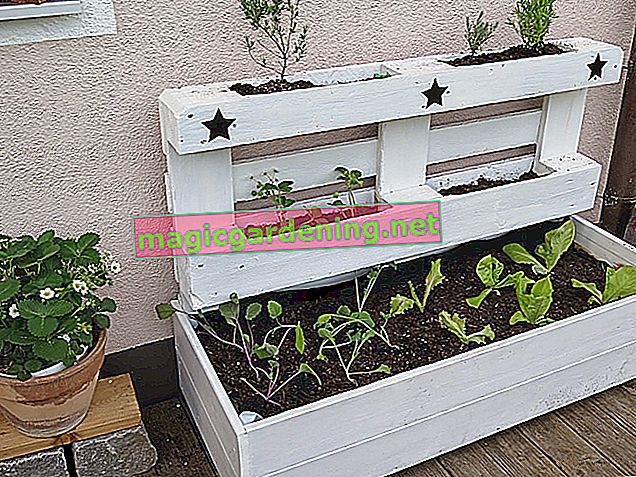
How often should turmeric be poured?
Since the turmeric plant comes from tropical latitudes with regular rainfall, it likes it to be evenly moist. The soil around the rhizomes should never dry out completely, but the plant does not like waterlogging either. Therefore, when cultivating in a pot, attention should be paid to suitable drainage below the plant substrate. When growing outdoors, you should regularly water sparingly, especially during the summer flowering period.
also read
- Turmeric - interesting facts about the leaves of this versatile plant
- Turmeric - an interesting spice with an attractive flower
- Grow turmeric yourself as a flowering plant and cooking ingredient
When and how is the turmeric plant repotted?
When repotting, it depends on how the plants are cultivated:
- in the pot on the windowsill
- as a pot plant outdoors
- planted with the tubers in the field
Since this is a non-frost-resistant plant species, tubers must be dug up from the field in early autumn and overwintered in the house in the dark. Plants placed inside the house are usually repotted or divided into a somewhat larger pot before they sprout in spring.
Does the saffron root have to be cut back?
Since the above-ground parts of the plant die off after the flowering period and only the rhizome survives as a perennial organ, the withered leaves and flowers are simply cut off. Removing dead buds during flowering can encourage more buds to form in the same season.
Which diseases and pests bother the plant?
If the turmeric is too warm and dry in the house, spider mite infestation occasionally occurs. These can be recognized by the white webs and fought with a sharp jet of water or appropriate means from specialist shops. Other deficiency symptoms are almost exclusively due to incorrect care.
How and when should turmeric be fertilized?
During the growth phase from spring to summer, commercially available liquid fertilizers or fertilizer sticks (€ 1.45 at Amazon *) can be used sparingly. Fertilization must be stopped by September at the latest. For the question of fertilization it is also relevant whether the rhizomes are intended for consumption or not.
How are the plants successfully overwintered?
The plants or their tubers should definitely be brought inside when the outdoor temperature drops below about 10 degrees Celsius. You can either dig up the rhizomes and clean them a little with a cloth, crush them in sand or overwinter in a pot with a relatively dry substrate. This should be done in a dark room and around 15 degrees Celsius.
Tips
When watering your turmeric plants, you should be careful not to wet the flowers too often. If water remains permanently in the notches of the annual inflorescences, in the worst case it can lead to flower rot.








